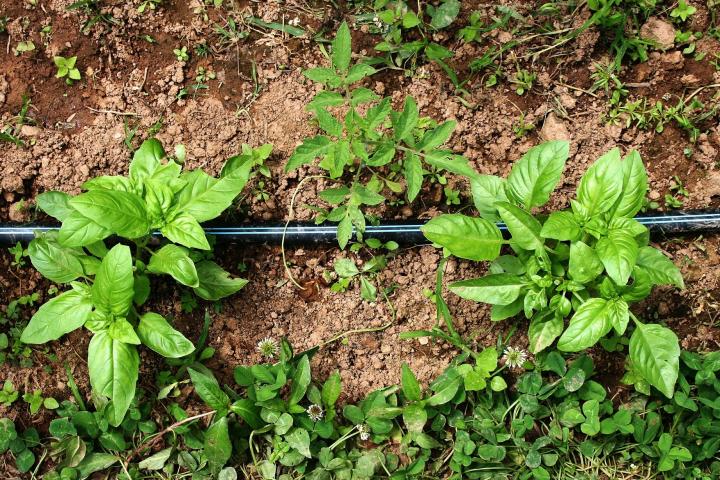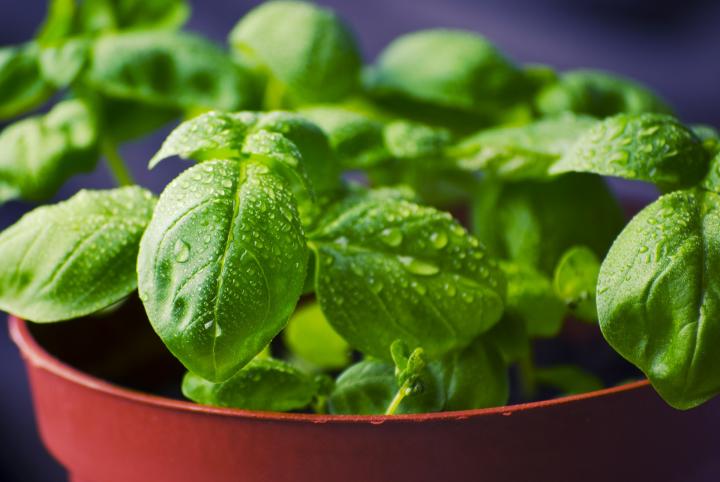
Planting, Growing, and Harvesting Basil
Types
- Cinnamon basil, to add a hint of cinnamon to a dish
- Purple basil adds some nice color to your garden (when steeped in white vinegar, it creates a beautiful color)
- Thai basil adds a sweet licorice flavor to a dish.
Cooking Notes
Make herbal vinegar using basil; it retains the flavor and makes a great gift! See how to make herbal vinegar.
ADVERTISEMENT
I love my basil, for the past 2 years I have been planting it in a shady spot with only late afternoon sun and it does wonderfully. Both times the plant has reached 3 feet! So I’m guessing that’s all the sun it needs.
Growing microgreens. You can eat microgreens as early as eight days after harvesting and as late as twenty five days after harvesting. When harvesting a microgreen it can grow as short as three fourths of an inch or as tall as two feet tall (They are typically harvested when they are about 1 to 3 inches tall). Growing plant cuttings. Sexual propagation This method involves growing plants from seeds, which is common for many self-pollinated and cross-pollinated plants. It is often the least expensive method and allows for long-term storage of plant material. However, it can result in genetic variation, which may not always replicate the parent plant's characteristics exactly. Asexual propagation Asexual or vegetative propagation involves using parts of a plant to reproduce new plants, ensuring the offspring are genetically identical to the parent. This method is advantageous for maintaining specific plant traits and can be faster than seed propagation. When growing microgreens choose seeds specifically labeled for microgreens. Popular options include radish, broccoli, kale, and sunflower.
Ok so I’m going to talk about basil cuttings because I feel like that is the most important topic that I’m writing about in this essay. So first let’s just talk about basil plants and what cuttings are. Later we will discuss how you should plant or replant a basil cutting. Basil cuttings are sections taken from the basil plant, specifically from the stem, leaf, or root (usually you would cut from the stem leaf and root cuttings are unusual in my science class) There are many benefits from just one basil plant!! So in order to have a cutting you must have:
1 A mother basil plant
2 Soil
3 Water
Benefits of having just one basil Mother plant:
From one plant come several plants
Takes up less space
Even one basil plant can provide a steady supply of fresh leaves for cooking use
Steps on how to plant, grow and tend to basil
First you want to choose a healthy stem from the basil plant, ideally one that is about 4 to 6 inches long. Be sure to check that the cutting has more than a few leaves.
Next you want to Use clean, sharp scissors or pruning shears to make a clean cut just below a leaf node (the point where leaves grow from the stem). Remove the leaves from the bottom half of the cutting leave a few sets of leaves at the top
Now you want to plant the cutting in soil and place it by a window to get plenty of light!
This was great information, hopefully I can do this with my Basil at home!
-Nebrija
Thanks for this! I love basil but I have trouble caring for it. Here’s to some in my future garden!
-Nebrija
Just bought some seeds for spring!
- Nebrija
We are excited to hear how it goes, Nebrija!
I planted my basil outside and 3 of them did amazing, but 1 of them turned brown and looks dead. Do you know what happened?
Hi, Mary, Were all the basils in the same bed? Was there something different about this basil? Was it shaded by another plant, preventing sunlight? Was it crowded and affected by airflow? Was it planted in a corner that was waterlogged or didn’t drain well? Sometimes it’s a pest or disease. 3 out of 4 ain’t bad!
HI, I have been buying basil from my local market. These come in plastic containers in the vegetable section. Most of the leaves are lovely green , but several have purpleish or brownish portions, some in mid-leaf , some barely at the edges. I usually pluck these spots off before eating, but I am wondering if they are safe to eat, or safe but maybe a little bitter. What do you advise? What is the cause? This is organic basil harvested leaves-- not plants.
Hi, Pam. It is possible that the basil is being damaged in transport and/or packaging. If the basil does not have an “off” smell, feel slimy, or look moldy, it should be safe to eat. But you are correct that it may taste bitter.











